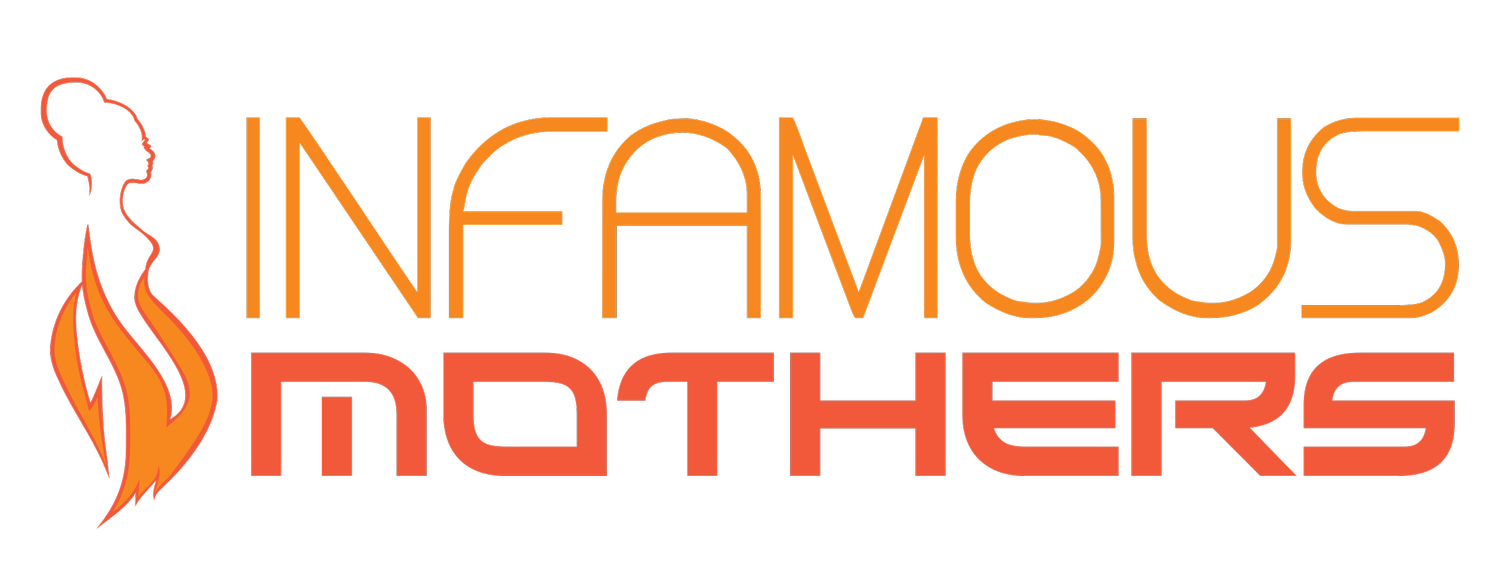Balancing Funding, Sponsorships, Tax Liabilities, and Financial Goals: A Beginner’s Guide (Part 2)
Learning about financial liability
Introduction
I've always been vocal and unapologetic about my ambition to become a millionaire. My goal was twofold: to make a significant impact by touching the lives of 2 million women globally and to create generational wealth for my family and myself. I shared this vision with anyone willing to listen, particularly the team of contractors I enlisted to help craft and execute my strategy.
As I honed my skills in setting quarterly objectives, understanding the flow of money through my business, and diligently managing finances both personally and professionally, I began to see real progress toward my goals. However, this progress came with unforeseen setbacks, such as unexpected tax liabilities, which caught me off guard.
Reflecting on these challenges, I see three main factors at play. The first, and perhaps the most unforeseeable, was the pandemic. COVID-19's impact on my online business was unexpectedly positive, a twist of fate that neither I nor my advisors could have predicted. This stroke of luck was beyond anyone's anticipation.
Touching the Lives of Two Million Women
The second issue, however, stems from a lack of deep understanding within my team. Despite their efforts, they hadn't fully grasped the potential of my company, leading to advice that didn't align with our accelerating growth.
The third, and most disheartening issue, was bias. Being a black, single mother of six and previously earning only $30k, I felt underestimated by some members of my circle, including both older white and younger black men. Their perceptions of me seemed to cloud their advice, focusing more on my past and present circumstances rather than my ambition and where I was headed. This oversight was a lesson that kicked us all in the a**...but especially me. But I learned, nonetheless.
Navigating the entrepreneurial landscape as a mother requires a fine balance between managing business needs and family responsibilities. Key to this journey is a strong grasp of financial management which includes handling business finances, understanding tax liabilities, securing funding and sponsorships, and aligning these with personal financial objectives. This guide offers mother entrepreneurs a comprehensive overview of managing these diverse yet interconnected financial aspects. I hope that it both helps you reach your financial goals and protects you in the process.
April is recognized as National Financial Capability Month, a period dedicated to enhancing our understanding and management of personal and business finances. This piece serves as the second installment in our enlightening series on financial empowerment, building upon the foundation laid in our initial discussion. Keep in mind, that I am not a financial advisor. The information here is a combination of my personal experiences and research.
Meeting with a Tax Professional
Managing Business Finances and Tax Liabilities
Understanding your finances is crucial to understanding your business. Expertise in a product or service alone isn't enough; grasping how money moves within your enterprise is key to your success. It's essential to recognize not just the perks of financial well-being, such as affording luxury items or vacations, but also the broader implications of your financial status.
This understanding becomes particularly vital for women in our community transitioning between income brackets. Many are accustomed to benefiting from earned income credits and receiving substantial refunds from the government during tax season. However, the transition to a higher bracket and the obligation to pay thousands, or even hundreds of thousands, in taxes can be overwhelming. Without the right preparation, this shift can jeopardize everything they've worked for, including homeownership and other assets. Thus, mastering financial management is not just beneficial but necessary for the growth and sustainability of your business. Below are some key areas to focus on.
Checking My Cash Flow
Budgeting and Cash Flow Management: Concrete Examples and Explanation
1. Budgeting with Danielle Pearson
- Example: Danielle Pearson, a married mom of two and the spirited owner of "Pearson's Pastries," meticulously crafts a monthly budget for her bakery. This budget encompasses all anticipated sales income from her popular bread, cakes, and pastries, and delineates every expected expense, including the lease for her charming bakery space, cost of ingredients, employee wages, utility bills, and upkeep of her baking equipment.
- Explanation: For Danielle, budgeting is not just about numbers; it's a strategic tool for navigating her business's financial health. It allows her to predict the bakery's revenue needs, earmark funds for growth, handle emergencies, and calculate profits. Danielle regularly adjusts her budget based on real earnings and expenditures, ensuring her bakery remains agile and prepared for what lies ahead.
2. Cash Flow Management by Danielle Pearson
- Personalized Example: Danielle keeps a vigilant eye on her bakery's cash flow, noting the ebb and flow of sales income, which typically surges on weekends. She's observed that her ingredient suppliers require payment mid-week, leading her to negotiate more favorable payment terms or to stagger payments to align with her cash flow peaks. This careful orchestration ensures Danielle's bakery has the liquidity to meet its obligations without a hitch.
- Explanation: For Danielle, managing cash flow is about ensuring operational fluidity. It's a balancing act of monitoring when money enters and exits the business, guaranteeing there's always enough on hand for immediate needs. This foresight and planning mean Danielle can keep her bakery running smoothly, reflecting her mastery in not just baking but also financial management.
3. Making Informed Decisions with Danielle Pearson
- Personalized Example: After poring over several months of financial data, Danielle notices a spike in the cost of organic flour, a staple ingredient for her bakery. To safeguard her profit margins without hiking prices for her customers, she explores negotiating lower prices with current suppliers or sourcing alternatives. This decision is grounded in her commitment to quality and affordability.
- Explanation: Danielle's continuous review of her bakery's financials sharpens her ability to spot trends and address potential challenges. It's this data-driven approach that empowers her to make strategic choices, ensuring her bakery's operations are not only efficient but also profitable.
Overall Concept
For Danielle Pearson, budgeting and cash flow management are not mere financial tasks; they are the heartbeat of "Pearson's Pastries." By diligently tracking her bakery's financial movements, Danielle ensures its solvency, fuels its growth, and adapts to the ever-evolving market landscape. Her story exemplifies how adept financial planning fosters business stability and expansion, proving invaluable for entrepreneurs in any industry.
Mom of three, owns a tech firm and knows her numbers
Understanding Financial Statements: Concrete Examples and Explanation
1. Balance Sheet
- Example: LaKeeya Smith, a mom of three and owner of a burgeoning technology startup, oversees her company’s assets, including cash, inventory (such as computers and software), and office equipment. The company’s liabilities include a bank loan and accounts payable to suppliers. At the end of the fiscal year, LaKeeya's balance sheet reveals total assets of $500,000 and total liabilities of $200,000, resulting in shareholder equity of $300,000.
- Explanation: The balance sheet provides LaKeeya with a clear snapshot of her company's financial condition at a specific point in time. It details the company’s assets, what it owes, and her ownership interest, essential for assessing the startup’s stability, liquidity, and financial health.
2. Income Statement (Profit and Loss Statement)
- Example: Over the year, LaKeeya's tech startup generated $600,000 in revenues from its innovative products and services. The cost of goods sold, including materials and labor, amounted to $200,000, with operating expenses such as rent, utilities, and salaries totaling $250,000. This resulted in a net income of $150,000 for the year.
- Explanation: The income statement chronicles the financial performance of LaKeeya's company over the fiscal year. It meticulously outlines how revenue is transformed into net income, illustrating her startup's proficiency in generating profit through effective cost and expense management.
3. Cash Flow Statement
- Example: During the year, LaKeeya’s company had cash inflows from sales amounting to $600,000, alongside a bank loan of $100,000. Outflows included $450,000 for operating costs, $50,000 for loan repayment, and $50,000 for investing in new equipment. The cash flow statement showed a positive net cash increase of $150,000.
- Explanation: This statement offers LaKeeya insight into the cash transactions over the year, categorized into operating, investing, and financing activities. It is crucial for understanding the startup's cash management, highlighting its ability to cover debts, reinvest, and sustain growth.
Overall Concept
For LaKeeya Smith, mastering her company’s financial statements is not just about keeping the numbers in check; it’s about securing her children’s future and expanding her startup. These documents offer a multi-faceted view of her business’s financial activities and health. By analyzing these reports, LaKeeya can make informed strategic decisions, ensuring her startup not only thrives but also lays the groundwork for generational wealth.
Setting Financial Goals
Setting Financial Goals: Concrete Examples and Explanation
Tiffany Murray, a dynamic entrepreneur and mom to seven incredible children, runs a boutique marketing firm that specializes in digital strategies for small businesses. Understanding the importance of clear financial planning, Tiffany has set specific financial goals for her business to ensure its growth and sustainability while supporting her large family.
1. Revenue Targets
- Example: Tiffany sets an annual revenue target of $500,000 for her marketing firm. This target is based on a combination of retaining current clients, acquiring new ones through targeted marketing campaigns, and expanding her service offerings to include social media management and content creation.
- Explanation: By establishing a clear revenue target, Tiffany provides a tangible goal for her team to strive towards. It serves as a benchmark for measuring the firm's financial performance throughout the year and helps in making strategic decisions about resource allocation, marketing efforts, and service expansion.
2. Profit Margins
- Example: Beyond just generating revenue, Tiffany aims to achieve a net profit margin of 20% after all expenses are accounted for. This means for every dollar the company earns in revenue, Tiffany wants to retain $0.20 as profit after expenses like salaries, marketing costs, and operational expenses are deducted.
- Explanation: Setting a profit margin goal helps Tiffany focus not only on increasing revenue but also on managing and reducing costs efficiently. It encourages her to regularly review her firm’s operational efficiency and cost structure, ensuring that the business remains profitable and financially healthy.
By setting these financial goals, Tiffany Murray demonstrates her commitment to not just sustaining her business, but also to providing for her family's future. These goals offer a roadmap for financial success, guiding day-to-day operations, strategic planning, and long-term growth efforts. For Tiffany, clear financial targets are not just numbers on paper; they are milestones on the path to achieving her dream of building a legacy for her seven children.
Living My Dream and Protecting It
Navigating Tax Liabilities: Concrete Example and Explanation
For Jasmine Welch, a pregnant mom of three and owner of a boutique graphic design firm, understanding and managing her business’s tax liabilities is not just a task—it’s a crucial strategy for her financial well-being. Jasmine has always been diligent in keeping her business and personal finances in order, but with the added responsibilities of motherhood and expecting another child, she knows that staying on top of her tax obligations is more important than ever.
Example: In the previous fiscal year, Jasmine's firm saw a significant increase in revenue thanks to a major contract with a national brand. This success, while welcome, also brought Jasmine into a higher tax bracket, increasing her business's tax liabilities. Additionally, the purchase of new design software and equipment meant Jasmine had to navigate the complexities of claiming these as business expenses for deductions.
To manage these challenges, Jasmine schedules quarterly reviews with her tax professional. During these sessions, they examine the firm's financials together, ensuring that all income is accurately reported and that every possible deduction, such as software subscriptions, new equipment, and even a portion of her home internet bill (as she works from her home office), is accounted for. They also discuss the implications of her business structure on her taxes, especially relevant as her family grows.
Paying Taxes
Explanation: By actively managing her tax liabilities, Jasmine ensures that her business remains compliant with tax laws, avoiding potential penalties that could arise from oversight or misunderstanding. These regular consultations help Jasmine leverage tax deductions effectively, reducing her overall tax burden. For instance, understanding the specific deductions available for home-based businesses and how to apply them correctly can significantly impact her taxable income.
Moreover, her proactive approach to tax planning allows Jasmine to forecast future tax obligations based on her business's growth trajectory. This foresight enables her to set aside sufficient funds for tax payments, ensuring they don’t become a source of stress during her pregnancy or as she welcomes her new child.
For Jasmine, and indeed any business owner, navigating tax liabilities with informed, proactive strategies not only safeguards against financial pitfalls but also secures the financial health of the business. Consulting with a tax professional provides personalized, expert advice tailored to Jasmine’s unique situation, ensuring her business’s compliance and optimizing its tax efficiency.
Designer of Children’s Clothes
Exploring Funding, Sponsorships, and Investment Opportunities
Securing capital and additional funding is a pivotal move for Tracy Richards, a dedicated 40-year-old entrepreneur gearing up to expand her burgeoning eco-friendly children's clothing line. As she embarks on this growth journey, Tracy also navigates the personal milestone of planning to adopt a child, adding another layer of motivation to solidify her business's financial foundation. Here’s how Tracy approaches securing the necessary funding:
1. Small Business Loans and Grants
- Personalized Example: Tracy delves into the world of small business loans and grants, focusing on those specifically designed to empower women and mother entrepreneurs. She meticulously compiles a list of grants aimed at supporting eco-conscious businesses and those promoting female entrepreneurship. Tracy applies for a grant dedicated to sustainable business practices, highlighting her clothing line's commitment to environmental stewardship and its positive impact on the community.
- Explanation: This strategy allows Tracy to tap into financial resources that not only offer monetary support but also resonate with her business's ethos. Small business loans and grants provide a crucial lifeline for funding without relinquishing equity, especially ones earmarked for women in business, aligning with Tracy’s dual focus on entrepreneurship and motherhood.
2. Venture Capital and Angel Investors
- Personalized Example: Tracy refines her business plan, emphasizing the unique selling proposition of her eco-friendly children’s wear and its scalability. With this robust plan, she pitches to a network of angel investors known for championing women-led startups and venture capital firms with a focus on sustainable businesses. Her compelling presentation highlights the brand's market potential and her vision for its future, capturing the interest of an investor group keen on ethical investments.
- Explanation: Venture capital and angel investment represent avenues for significant funding, in exchange for equity, to propel Tracy's business into its next growth phase. A solid business plan not only demonstrates the viability and potential of her venture but also aligns her personal values with those of like-minded investors, crucial for a sustainable partnership.
3. Sponsorships
- Personalized Example: Tracy identifies brands and companies whose values mirror her own, particularly those emphasizing sustainability, ethical business practices, and family welfare. She approaches a well-known eco-friendly detergent brand, proposing a sponsorship deal for her upcoming sustainable fashion show. The brand, eager to associate with initiatives that promote environmental awareness among families, agrees to sponsor the event.
- Explanation: Sponsorships offer Tracy an innovative funding stream, allowing her to finance specific projects or events without dipping into her capital reserves. This approach not only secures the necessary funds but also fosters partnerships with brands that can amplify her business’s reach and credibility. By aligning with companies that share her values, Tracy ensures that every financial backing her business receives also contributes to building a brand that’s true to her vision for a sustainable future.
For Tracy Richards, securing funding is more than just a business necessity; it’s a step toward achieving her dreams of expanding her eco-friendly children's clothing line while embarking on the journey of motherhood through adoption. By strategically navigating small business loans and grants, venture capital, and sponsorships, Tracy lays down a solid financial foundation that supports both her business ambitions and personal aspirations.
Juggling Expenses
Balancing Personal and Business Financial Goals
Striking a balance between your personal and business finances is critical for maintaining financial health and fostering growth. For Renee Okorafor, a dedicated business coach with aspirations of starting her family through in vitro fertilization (IVF), managing this balance is not just a practice she preaches but a personal necessity. Here's how Renee approaches her financial strategy:
1. Separate Personal and Business Finances
- Personalized Example: Renee meticulously maintains separate bank accounts for her coaching business and personal finances. This clear delineation simplifies her tax preparation and streamlines her financial management, making it easier to track business growth and personal savings. When Renee invests in new coaching tools or marketing efforts, these transactions are cleanly recorded in her business account, whereas her personal account is reserved for savings towards her IVF journey and other personal expenses.
- Explanation: Keeping distinct accounts for personal and business finances helps Renee avoid the common pitfall of intermingling funds, ensuring accurate financial reporting and simplifying tax filings. This separation is fundamental for financial clarity and legal protection.
2. Personal Financial Planning
- Personalized Example: Understanding the importance of personal financial health, especially given the significant costs associated with IVF, Renee is proactive in her personal financial planning. She allocates a portion of her income to a dedicated savings account for IVF, contributes regularly to an emergency fund, and invests in a diversified retirement plan.
- Explanation: Renee recognizes that her personal financial security is as crucial as her business's success. By prioritizing savings, emergency preparedness, and long-term financial goals, she ensures that she's building a secure foundation for her future family, without compromising her business’s financial needs.
3. Risk Management
- Personalized Example: Aware of the inherent risks in running a coaching business, Renee invests in comprehensive business insurance to protect against liabilities. Additionally, she diversifies her income streams by offering a range of services, including one-on-one coaching, group workshops, and online courses. This diversification not only mitigates financial risk but also provides stability to fund her IVF journey.
- Explanation: Effective risk management involves both protecting against potential losses and ensuring income stability. For Renee, having the right insurance safeguards her business, while income diversification builds a resilient financial structure, crucial for her personal and professional aspirations.
For Renee Okorafor, blending her role as a business coach with her personal aspirations requires a nuanced approach to financial management. By maintaining separate finances, focusing on personal financial health, and managing business risks, Renee sets a sterling example of how to navigate the complexities of balancing professional success with personal dreams, including her path to starting a family through IVF.
Financial and Wealth Glossary
Glossary of Terms
Navigating the world of financial empowerment, especially for mother entrepreneurs, comes with its own set of terminology. Understanding these terms is crucial to mastering the art and science of financial management for both your business and personal life. To aid in this journey, we've compiled a comprehensive glossary of key terms discussed in "Balancing Funding, Sponsorships, Tax Liabilities, and Financial Goals: A Beginner’s Guide (Part 2)." This glossary is designed to clarify financial concepts, making them accessible and actionable. Whether you're drafting your first budget, exploring funding options, or setting strategic financial goals, this glossary will serve as your essential companion, helping to illuminate the path toward financial success and stability.
Ambition to Become a Millionaire: The goal to reach a net worth or personal wealth that exceeds one million units of currency. It often represents not just financial success but also the ability to have a significant impact on others' lives.
Balance Sheet: A financial statement that reports a company's assets, liabilities, and shareholders' equity at a specific point in time, providing a basis for computing rates of return and evaluating its capital structure.
Bias: Preconceived opinions or attitudes toward a person or group that can influence decision-making and interactions. In business, bias can affect everything from hiring practices to investment decisions.
Budgeting: The process of creating a plan to spend your money, outlining anticipated income and expenses over a specific period. It helps ensure that resources are available for the most important things.
Cash Flow Management: The practice of tracking, analyzing, and optimizing the net amount of cash receipts minus cash expenses. Effective management ensures a business has the liquidity to meet its obligations.
Cash Flow Statement: A financial statement that provides aggregate data regarding all cash inflows a company receives from its ongoing operations and external investment sources, as well as all cash outflows that pay for business activities and investments during a given period.
Generational Wealth: Financial resources passed down from one generation of a family to the next. It represents more than money, encompassing values, education, business interests, and real estate that contribute to long-term family prosperity.
Income Statement (Profit and Loss Statement): A financial statement that shows a company’s revenues and expenses over a specific period, demonstrating how revenues are transformed into net income or loss.
Quarterly Objectives: Short-term goals set by businesses to guide operational, financial, and strategic planning over three months, typically within a given fiscal year. These objectives are essential for tracking progress toward annual goals.
Tax Liabilities: The total amount of tax debt owed by an individual or business to federal, state, or local tax authorities. Managing this involves strategic planning to minimize owed taxes while remaining compliant with tax laws.
Conclusion
Financial empowerment for mother entrepreneurs is not just a goal; it's a journey that demands a holistic approach to managing finances, understanding tax obligations, seeking diverse funding avenues, and harmonizing personal and business financial health. As you navigate this path, the mastery of these elements is crucial to propel your business forward and safeguard your family's financial well-being.
The entrepreneurial voyage for mothers is dotted with hurdles, yet it brims with chances for growth and success. Armed with the right financial tactics, a keen grasp of tax intricacies, and knowledge of securing funds and sponsorships, you, as a mother entrepreneur, are poised to flourish in your endeavors. This journey doesn't just benefit your business; it sets a powerful precedent for your family and community, showcasing resilience, strategic acumen, and financial independence.
Engage and Share Your Journey
Now, we turn the spotlight on you. Have you found innovative ways to balance your personal and business finances? How have you navigated the complexities of funding or tackled tax challenges head-on? Share your experiences, tips, or questions in the comments below. Your insights not only enrich our community but also inspire and empower fellow mother entrepreneurs embarking on similar journeys. Let's create a vibrant tapestry of stories that celebrate our successes, learn from our challenges, and pave the way for a future where mother entrepreneurs thrive, not just survive.
P.S. — It’s Covet Season
In the Infamous Mothers Universe (IMverse), we're fully immersed in the transformative Covet season. This is the phase where extraordinary women in our world wholeheartedly dedicate themselves to becoming the versions of themselves that once seemed out of reach. During this season, women are achieving their health and wellness goals, increasing their bottom lines, and accomplishing things that were once deemed 'impossible'. Our mission is crystal clear: we exist to inspire, motivate, and educate you as you relentlessly pursue the very dreams you've longed for.
If you want to join us in Covet season, are ready to delve deeper into the enriching content of this series, we have more FREE content to offer:
Subscribe to our blog: Gain access to valuable content that can spark your personal transformation (complete the Weekly Wench form below).
Join our Wanted newsletter: Stay in the loop with the latest resources.
Join our growing Instagram community to connect with kindred spirits. We're here to empower you throughout Covet Season, guiding you to turn your dreams into a vibrant reality.
Photo Credit: Chris Charles
ABOUT THE BLOGGER
Dr. Sagashus Levingston is an author, entrepreneur and PhD holder. She has two fur babies, Maya and Gracie, six children (three boys and three girls), and they all (including her partner) live in Madison, WI. She loves all things business, is committed to reminding moms of their power, and is dedicated to playing her part in closing the wealth gap for people of color and women. She believes that mothering is a practice, like yoga, and she fights daily to manage her chocolate intake. The struggle is real, y’all…and sometimes it’s beautiful.
Follow her on Instagram: @infamous.mothers












